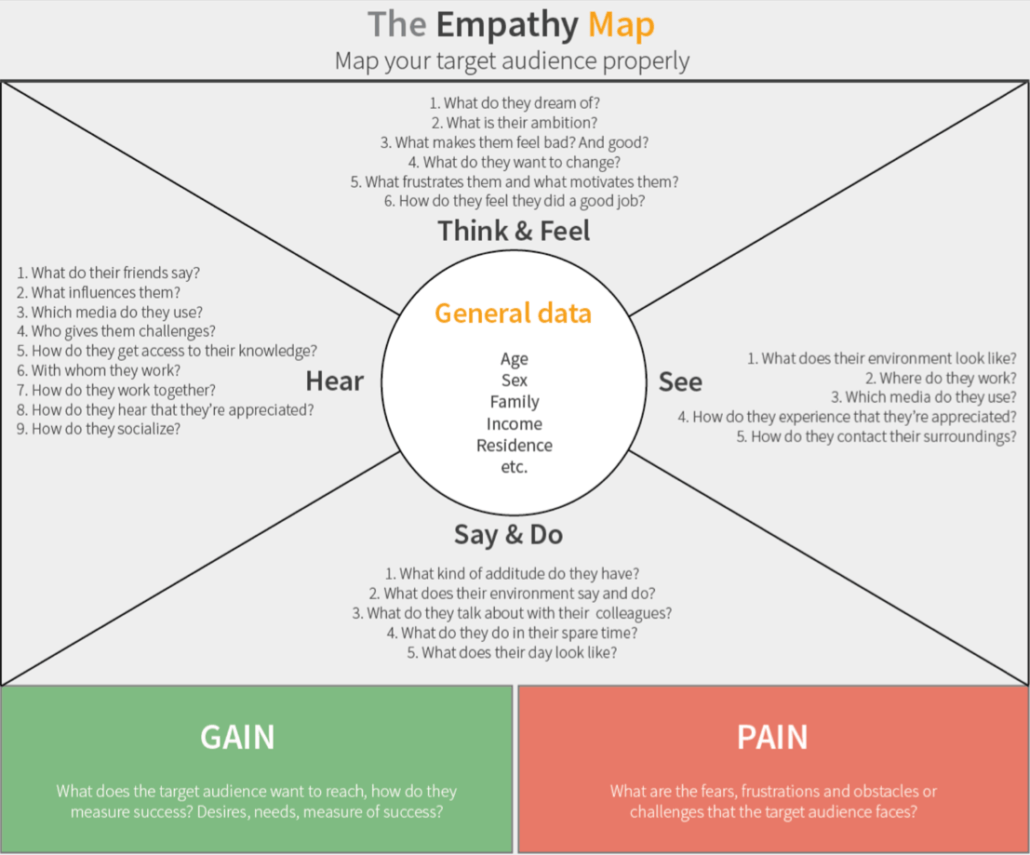Empathy makes you a better innovator – Satya Nadella, CEO, Microsoft
The greatest gift human beings have received from GOD is the power of empathy. Empathy is a combination of three things – seeing with the eyes of another, listening with the ears of another and feeling with the heart of another.
Inculcating this as a habit is of tremendous value as it can help innovators discover “real opportunities”that are underserved. Providing creative solutions for these underserved opportunities can result in the next breakthrough innovation companies are looking at.
In this article we explore the importance of developing deep empathy for customers and the “how to” of it.
Developing Empathy – The Importance and Relevance
A leading FMCG company1 had introduced a special concentrated variant of washing powder for low-income Brazilian households who lived in tiny dwellings. The idea was to use small quantity of concentrated powder for every wash reducing overall size of the packing and thus saving some space on the storage racks in these tiny households. The marketing team thought this to be the perfect solution, which was a result of an observation made during a customer survey. After its introduction, the sale of these new variant didn’t pick as expected and further enquiry revealed the truth. Amidst all the hardship that a woman of such households had to go through, she was determined not to compromise anything that was related to her child; amongst other things neatness of her child’s uniform was on her priority list. Her mind didn’t accept using lesser than normal quantity of washing powder to wash school uniform & other clothes. Hence, use of the same quantity of powder even with new variant increased the overall washing expenses. This forced her to move to other brands affecting the company’s sale. The Marketing team had clearly failed to listen to her aspirations of being a good mother to her child & being a good homemaker.
Empathy thus is becoming one with the customer and living her life to understand her frustrations, anxiety, pains and moments of joy. Innovators can then provide solutions and help customer overcome frustrations and/or magnify moments of joy.
Developing Empathy – “How-to?”
To empathise we need deep customer insights. For obtaining deep customer insights we need to observe customers in their natural environment with an unbiased mind. The observer should never make customer observations based on her pre-conceived notions about the product or a service attributes, for she may not derive the real customer insights and may get product/service design completely wrong.

Here are six facets of obtaining deep customers insights for building the customer empathy map: It starts with a question ‘What does she?’
- Think & Feel: questions to explore here are what does the customer think & feel, what really counts for her? What are her major preoccupations, what worries her, what are her personal aspirations? What are her aspirations for her loved ones?
- See: It’s all about her environment, what does her environment look like (physical space, emotional space), who are her friends, whom she interacts with etc.
- Say & Do: This covers customer’s attitude in public, her behaviour and how she presents herself to her environment
- Hear: Observing her friends & influencers and what she hears from them and how such messages shape her thoughts?
- Pain: Here we need to understand her frustrations, fear and obstacles that she comes across in her life. What are the workarounds she currently uses to overcome these pains?
- Gain: What’s important to her? Why is it important? How she defines success in anything she does?
Ethnography 2: A Way to Gain Insights
Ethnography is increasingly gaining popularity to decode the mind of the consumer. In simple terms ethnography is an approach to understand how people live their lives. Unlike traditional market researchers, who ask specific, highly practical questions, ethnographical researchers visit consumers in their natural environment for e.g. home, office, hospital, parks, restaurants etc. and observe, listen to them in a non-directed way. It’s a way to see people’s behaviour on their terms.
For e.g. When Intuit wanted to launch a personal financial software product, it did not assume what the customers needed in-terms of typical reports and functionalities. Executives from Intuit went and spent time with small business owners just observing how they went about their work and understood their pains and also what was important to them.
There are several ways to do ethnography with varying degrees of intrusion. Some techniques are absolutely covert and some are overt.

What’s Next? Call for Action!
If an organisation wants to develop “the ability to empathize with customers” as an essential habit they need to learn to “do it themselves” rather than delegate to an expert or researcher or survey teams. No amount of reading about it can develop this habit. Leaders and their team members need to hit the ground and start observing customers to gain insights for building an empathy map.
This need not always be a planned exercise. If this becomes a habit, managers can continue to observe and listen to customers at all touch points and learn to go beyond the usual questions and platitudes and generate insights.
Key steps to this would be as follows:
- Learn about various ethnography techniques
- Create the framework for capturing planned and unplanned customer insights
- Get started…
Remember, habits develop only with repetitive action! So get started and make your first empathy map using the template provided!
Once you have the empathy map the next step is to extract “job statements” from your observations and understand ‘what jobs customers are trying to get done?’ More about this in our next post.
References:
- The Game-Changer: How You Can Drive Revenue and Profit Growth with Innovation by A. G. Lafley & Ram Charan, Publisher: Crown Business, New York
- Refer this link to know more about different types of ethnograph
